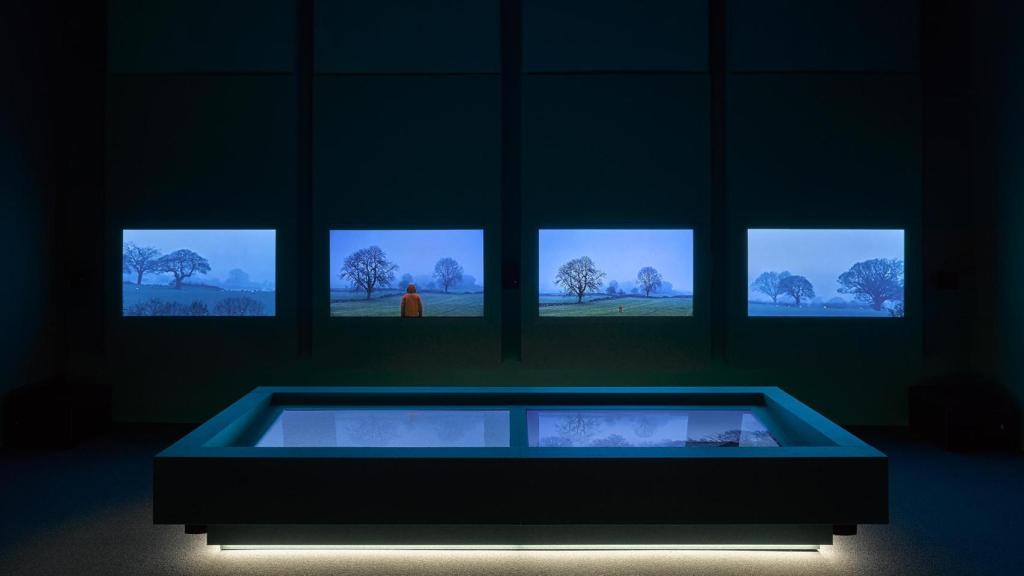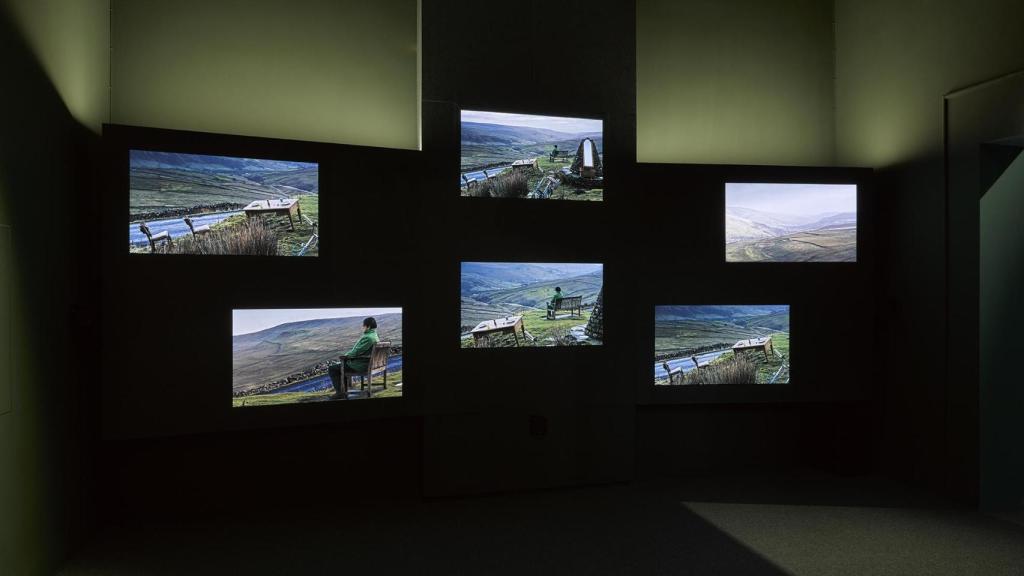In the gardens of the Venice Biennale, the space located at the highest altitude is the United Kingdom Pavilion. There, in 2024, the Afro-British artist John Akomfrah (Acra, Ghana, 1957) presented for the first time an ambitious project that gave prominence to the sound dimension.
It was a complex video installation distributed in monochrome roomswith a structure that divided the course of the story into eight Cantos. Running through all of them, as if springing from a secret spring deep within the building, the constant presence of the images and sounds of flowing water was maintained.
The wet sensation precisely gave the title to the project, which borrowed some verses from the Chinese poet Su Dongpo (1037-1101): Listening to the rain all night. Now, an adaptation of this proposal has been brought to the Thyssen within the TBA21 Foundation program.
A shorter version has arrived in Madrid, which includes four of the eight original songs, and adds as a preamble a selection of works from the Thyssen Collection: Romare Bearden, Stuart Davis, Joan Miró, Yves Klein and Lucio Fontana prepare us before fully immersing ourselves in Akomfrah’s universe.
Once inside its video installation, the first room, tile red, houses the Canto IV. In it, a series of characters are shown located next to the coast, surrounded by memories of previous lives, while underwater we contemplate the movement of the schools of fish.

John Akomfrah: ‘Canto VII’. Photo: Jack Hems
The next room, all painted green, houses the Canto VIIdedicated to the so-called “Windrush generation” of migrants who arrived in England and Scotland from the Caribbean in 1948.
The end of the show, with the Canto VIIIrefers to the destruction of the environment that war conflicts implyfocusing on the massive pesticide bombing by the US Army in the Korean War (1950-53) and the Vietnam War (1955-75).
However, the pumping heart of the story is at the center of the journey. In a large blue room, where the seats take the shape of an “X”, the Canto VI it’s a monument to the decolonial and feminist struggle movements.

John Akomfrah: ‘Canto VIII’. Photo: Jack Hems
The images, which surround the viewer from the multiplicity of screens that occupy the four walls, focus on the anti-colonial movements in Africa and Asia, between the 1940s and 1970s. Their stories of struggle are connected with the diaspora in the UKlinking colonial history with its persistent legacy.
From the beginning, in the videos you can see the same procedure that will accompany the entire exhibition: the screens, on the one hand, show dreamlike scenes filmed by Akomfrah. These are formed as a kind of portraits of people who are located in empty landscapes, surrounded, as if they constituted wreckof a whole series of objects that refer to population movements and the stratigraphic layers of time.
On the other hand, these tableaux They alternate with recordings from a multiplicity of files. In them, diverse historical places and moments are connected, bringing from the past specific faces linked to work stories, colonial violence, extermination and diaspora.
Some elements reappear in different rooms, as if they had been dragged by the movement of water. For Akomfrah, the sea not only refers to the transportation of populations, but appears as a memory repositoryconfiguring itself as an archive that contains the stories of the past, present and future.
Thus, its flow also refers to non-linear ways of understanding timewith strata of memory that return to the surface in the same way that the waves bring vestiges of other times and places.
The truth is that, despite being compartmentalized into different Songsthe exhibition has a clear unified meaning. The artist himself has insisted on the fact that in reality It must be perceived as a single piece. And if we think about the different dimensions of his proposal, we can venture that it works as an update of the “Total Work of Art” (in German, Total work of art).
This operatic concept that Wagner popularized refers to the conception of an aesthetic form that included all the arts at the service of the same work. Although the prominence of soundscapes is evident in his work, literary allusions also abound, from the structure by Cantos taken from Ezra Pound, to the title of the exhibition itself.
The centrality of the painting is evident in the importance of color, whose chromaticism refers to the palette of the American painter Mark Rothko and whose exhibition design makes special mention of his chapel in Houston.
The devotional spaces were a reference for Akomfrah and his curatorial team, who refer to the panels composed of video pieces as “altars.” The meditative dimension and spiritual sense is something that is perceived throughout the entire journey, which can be read as a memorial dedicated to anonymous people who have led the great population movements, and those who fought against colonial and racist violence.
Jorge Manrique said that “our lives are the rivers that flow into the sea, which is dying”: to the literary trope of human existence as flowing water, is added the analysis of human history as a set of journeysmany of them forced by the dynamics of colonialism.
Keeping this reality in mind is becoming more and more important against xenophobic tendencies and exclusionary ones that want to erase the inherent mobility of our collective history

